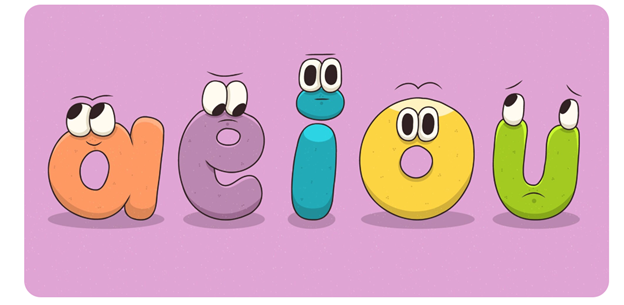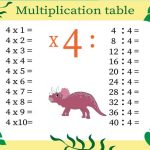Has your child ever pronounced “thumb” as “thuhmbh” or “knife” as “kuh-nife”? If yes, your child is not the only one! Many toddlers struggle with silent alphabets or words. After all, when they see a letter like ‘b’ in “thumb,” it’s only natural to try pronouncing it, isn’t it?
Silent letters are one of the trickiest aspects of English, and parents can guide their children through these tricky words. In this blog, we’ll explore common words with silent letters in English and share practical strategies to help your child recognise and pronounce them correctly. Let’s turn this challenging aspect of English into an exciting learning adventure for your little one!
What are Silent Letters?
Silent letters are letters that are in a word’s spelling but aren’t always pronounced. For instance, ‘b’ in thumb or ‘k’ in knife. Silent letters can be either vowels or consonants, and sometimes, they even work in pairs, such as ‘gh’ in cough, which sounds more like ‘f’.
These “hidden” letters often confuse young kids who are still learning to associate sounds with symbols. Now that you know what silent alphabets are, let’s look at silent letters from a to z with real-life examples.
Understanding How Silent Letters from A to Z Work
1. Silent A
Words ending in “-ally,” like ‘logically’, ‘artistically’, and ‘musically’, appear to have four syllables, but they are pronounced with just three. That’s because the ‘a’ in these words remains silent. For instance, you wouldn’t want your little one to pronounce “logically” as “logic-ally.” You would want them to pronounce it as “logiclly.” How can you do that? Introduce them to a bunch of words where A is silent. This will help them understand how silent A functions in different spellings.
2. Silent B
Sometimes, the letter B is not spoken in words like ‘thumb’, ‘lamb’, or ‘doubt’. You might see it in the spelling, but you might not hear it when you say the word. A long time ago, people used to pronounce the word with the ‘B’ sound, but over the years, it just disappeared from speech. You can help your child notice this by saying these words aloud and asking, “Can you hear the ‘B’?” They’ll enjoy the game of finding letters that are hidden!
Also Read: How Many Letters are there in the Alphabet?
3. Silent C
In words like ‘science’, ‘scene’, or ‘muscle’, the letter ‘C’ comes after an ‘S’, but we don’t say it as we write it. That’s because these words, science, scene, or muscle, are derived from Latin words scire, scena, and mus, respectively. People in Latin use hard and soft C, and these words fall under the soft C category. When teaching your kids about the silent C, research thoroughly about the hard and soft C sounds, and explain to them the differences as well.
4. Silent D
The letter D is silent in words like Wednesday, handsome, or edge. Though it’s there in the spelling, we don’t say it aloud. This change was made to make the words easier to speak. A fun activity to make your kids aware of the silent ‘D’ is to say the word ‘Wednesday’ slowly, and then eventually your child will notice how the ‘D’ sound disappears.
5. Silent E
The letter E is often silent at the end of words like ‘kite’, ‘make’, or ‘breathe’. Even though we don’t hear it, the ‘E’ changes how the vowel before it sounds. For example, ‘kit’ and ‘kite’ look similar, but sound very different because of the silent ‘E’. Show your child pairs like ‘hop/hope’ or ‘mad/made’ to explain the magic of the silent E.
6. Silent F
The letter F is usually not one of the silent letters from a to z. It’s one of the letters that we can count on to make a sound almost every time. You can tell your child, “F is one of the friendly letters we always hear!” Share examples of words like ‘fight’, ‘fear’, and ‘fly’ to demonstrate how ‘F’ is never silent.
7. Silent G
In some words, like ‘sign’, ‘gnome’, or ‘light’, we write the letter ‘G’, but we don’t say it. These words come from old English roots where ‘G’ was once pronounced. Although we have changed the way we pronounce it, the spelling remains unchanged. Try showing your child words like “design” and “signature”—where the ‘G’ is silent in one and pronounced in the other. This helps them see how spelling changes the sound.
8. Silent H
The letter H is silent in words like ‘honest’, ‘hour’, and ‘what’. In some words, especially ones borrowed from French, the ‘H’ was never spoken. You can ask your child to listen to the pronunciation of these words, and ask them, “Can you hear the ‘H’ at the start?”
9. Silent I
In words like ‘business,’ the letter ‘I’ is part of the spelling but not really heard when we say the word. It’s still important for spelling, even if it’s silent. You can say the word slowly with your child and ask them to point out the letters they didn’t hear.
10. Silent J
The letter J is rarely silent, but in words like marijuana, it sounds more like an ‘H’. This is because the word comes from Spanish. For older kids, this can be a fun way to learn that English borrows words from many languages.
11. Silent K
When K comes before the letter ‘N’, like in knee, knife, or knock, we don’t say the ‘K’. This is because, long ago, people used to say both letters, but now we’ve made the words easier to pronounce. You can write down some “KN” words and ask your child, “Which letter didn’t we hear?”
12. Silent L
In words like walk, talk, and calm, the letter L is written but not spoken. Initially, people used to pronounce L in words like walk, talk, calm, etc., but over time, people stopped saying it. Try asking your child to say the word slowly and listen carefully, “Can you hear the ‘L’?” Real-life examples like walking to the park make it easier to remember and realise the silent L on their own.
13. Silent M
You’ll rarely see M as a silent letter, but it happens in words like mnemonic. These words usually come from Greek. Though they’re not common, they’re fun to introduce when learning big words or memory tricks.
14. Silent N
When N comes after the letter ‘M’ at the end of a word, like in autumn, hymn, or column, we don’t hear it. These words often come from Latin. Show your child how the word hymn becomes hymnal—they’ll see the ‘N’ return in other forms.
15. Silent O
In the word ‘colonel’, the letter O is written, but it sounds like a ‘kernel’. That’s because this word originated from French and Italian, and English retained the spelling but altered the pronunciation. You can play word puzzles with your child: “Which letter is hiding in this word?”
16. Silent P
Words like psychology, receipt, or cupboard have a P that isn’t pronounced. These words often come from Greek, and that’s why P remains silent. You can show your child the word psycho and ask, “What sound does it start with?” It helps them connect spelling with sound.
Also Read: Fun Ways to Teach the Alphabet to Kids
17. Silent Q
The letter Q is rarely silent, but in a word like ‘lacquer’, it’s not clearly heard. This is another word from French. While it’s not something to focus on with early learners, it’s interesting to point out occasionally.
18. Silent R
In some accents, especially British English, the letter R is soft or silent in words like iron. In these cases, the word might sound more like “eye-un.” Listening to how people in different places speak helps children understand that English sounds different around the world.
19. Silent S
These words often come from French or Latin. You can look for these words in storybooks or signs and ask your child, “Can you find the ‘S’ that we don’t say?”
20. Silent T
Words like “castle”, “listen”, and “whistle” have a silent T. It’s written but not spoken to make the word flow more smoothly. Try whispering the word ‘castle’ with your child and ask, “Where’s the ‘T’ sound?” It helps build careful listening.
21. Silent U
In words like “guess”, “guitar”, and ‘guide’, the letter ‘U’ is silent. It’s there to make the ‘G’ sound soft, but we don’t say it aloud. Show your child the words ‘gut’ and ‘guide’ to explain how adding a ‘U’ changes the way ‘G’ sounds.
22. Silent V
The word V is never silent in normal English words. It always has a voice, which makes it a very reliable letter for new readers.
23. Silent W
The letter W is silent in words like ‘write’, ‘wrist’, or ‘whole’. These words come from Old English. Try showing your child words like ‘write’ and ‘right’, and ask, “Which letter is in one word but not the other?”
24. Silent X
In a word like faux, the X is silent. It’s pronounced like “foh.” This word comes from French, and English kept its original sound. These are great for vocabulary-building games with older kids.
25. Silent Y and Z
In some rare words, like “rendezvous” or “laissez-faire,” the Z is silent, and in prayer, the Y is pronounced very softly. These words originate from French, and their spellings remained the same, even though the sounds changed. Use these words to show your child how English borrows from other languages.
Why Do Silent Letters Exist in English?
Here are some reasons why silent letters in english are still prevalent in today’s day and age:
1. Leftovers from Old English: Long ago, people actually pronounced the silent letters we skip today. For example:
- “Knight” was once said with the k and gh sounds.
- “Debt” got its silent b from Latin (debitum), and it stuck!
2. Borrowed from Other Languages: English “borrows” lots of words from other languages and often keeps their original spelling:
- “Psychology” comes from the Greek, where ps was pronounced.
- “Hour” came from French, where the h was never spoken.
3. Spelling Stayed the Same, Pronunciation Changed:
During the 15th to 17th centuries, English spelling began to be standardised, especially with the invention of the printing press. Over the years, our pronunciation has evolved, but spelling has still remained the same.
Also Read: Difference between Alphabet and Letter for Preschoolers
Frequently Asked Questions (FAQs) on Words with Silent Letters
1. What are words with silent letters?
Words with silent letters include letters that are written but not pronounced. Knife, thumb, island, write, and honest are some of the great examples of words with silent letters.
2. Why does English have silent letters?
The English language has evolved with time. This evolution is visible in the way we pronounce words. Therefore, there are many silent words in the English language.
3. How can children learn silent letters easily?
There are many ways to teach kids about silent words in English. You can teach silent letters through:
- Phonics games and flashcards
- Word family patterns (e.g., kn-, wr-)
- Fun reading activities with repetition
- Rhymes and stories that highlight tricky words
4. Which alphabet has the most silent letters in words?
The letter “e” is the most common silent letter in English, often used to change the sound of other letters (as in hope, like, name).
Final Thoughts
Silent letters may not be heard, but they play an important role in how one reads, spells, and understands words. While preschools teach children the alphabet, parents can help their little ones learn to pronounce two- and three-syllable words. While you are at it, also introduce words with silent letters to avoid wrong pronunciations. You can also check EuroKids Blogs for more such fun and exciting blogs on your little one’s learning and development. Don’t forget to check out EuroKids Preschools for the first step in your child’s learning journey.
Related Blogs:
- Best Alphabet Books for Preschoolers: Looking for fun and educational ways to introduce letters to your little one? This blog has some of the best alphabet books for preschoolers that make learning engaging and enjoyable. These books combine bright visuals, playful rhymes, and interactive elements to spark early reading interest.
- What is the Alphabetic Principle?: Ever wondered how children learn to connect letters with sounds? This blog breaks down the Alphabetic Principle, a key part of early reading, in a simple and parent-friendly way.
- Learn the Art of Letter Writing: Want to teach your child how to write meaningful letters? This blog covers everything from the types of letters (informal, formal) to easy letter writing tips for young learners.
















